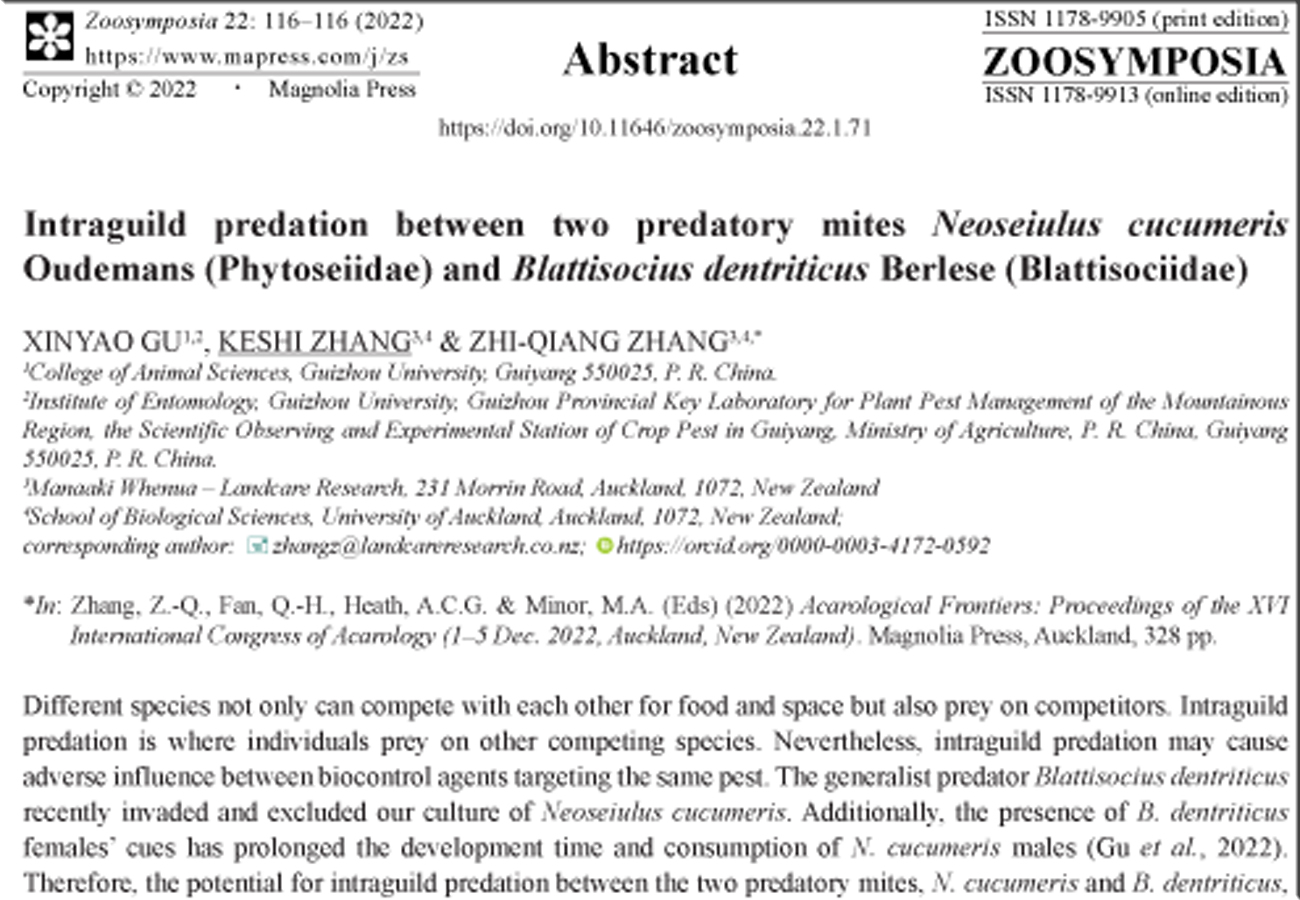Abstract
Different species not only can compete with each other for food and space but also prey on competitors. Intraguild predation is where individuals prey on other competing species. Nevertheless, intraguild predation may cause adverse influence between biocontrol agents targeting the same pest. The generalist predator Blattisocius dentriticus recently invaded and excluded our culture of Neoseiulus cucumeris. Additionally, the presence of B. dentriticus females’ cues has prolonged the development time and consumption of N. cucumeris males (Gu et al., 2022). Therefore, the potential for intraguild predation between the two predatory mites, N. cucumeris and B. dentriticus, was investigated. Laboratory experiments were conducted using a no-choice test and a population test in the presence of their shared prey, Tyrophagus putrescentiae Schrank. Like other phytoseiid species, intraguild predation between N. cucumeris and B. dentriticus is mutual though they are asymmetric in size. Blattisocius dentriticus was larger than N. cucumeris, based on their dorsal shield lengths of the same sex and life stage, and superior than N. cucumeris in intraguild predation. In the no-choice test, B. dentriticus adults consumed N. cucumeris at all life stages, while N. cucumeris adults (i.e. females) preyed only on immature B. dentriticus. Body size was found to be a major factor affecting the direction of intraguild predation: intraguild predators were larger than intraguild prey they consumed. In the population experiment, B. dentriticus eliminated N. cucumeris despite the different starting populations of the two species. Our laboratory study suggests that B. dentriticus may adversely impact N. cucumeris through direct (i.e. intraguild predation) and indirect interactions.
References
Gu, X.Y., Zhang, K. & Zhang, Z.-Q. (2022) Non-consumptive effects of intraguild predator Blattisocius dentriticus (Berlese) on the development and prey consumption of Neoseiulus cucumeris (Oudemans). Systematic and Applied Acarology 27 (7), 1475–1482. https://doi.org/10.11158/saa.27.7.12


